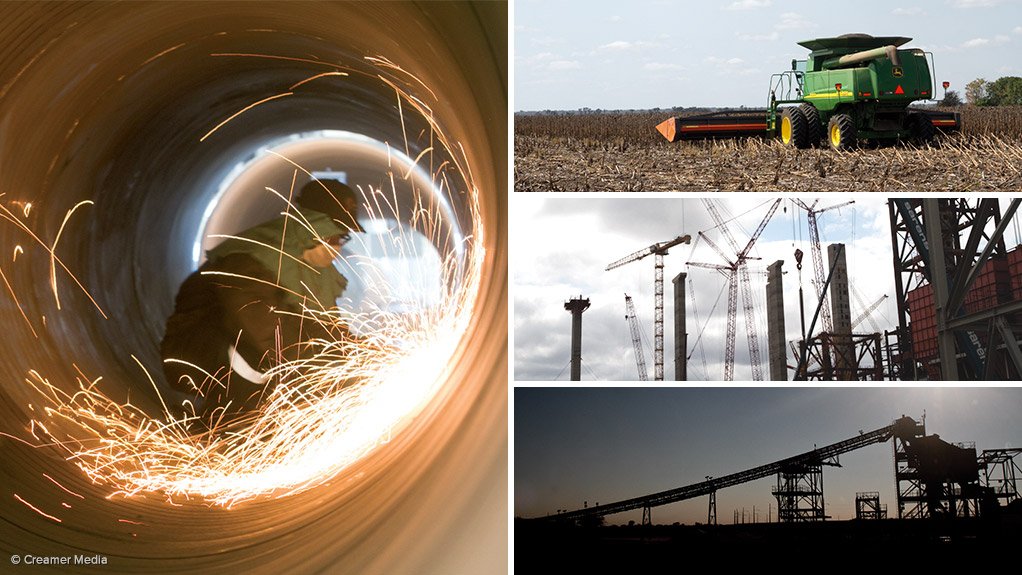Statistics South Africa (Stats SA) reports that the country’s seasonally-adjusted gross domestic product (GDP) rose by 1.9% quarter-on-quarter in the first quarter of the year, driven primarily by the manufacturing sector, which increased by 4.9% and contributed 0.6 of a percentage point to the overall tally.
On a year-on-year basis, unadjusted GDP was 3% higher.
The size of the economy is now at pre-pandemic levels, with real GDP slightly higher than what it was before the Covid-19 pandemic, Statistics South Africa reported on June 7.
Within manufacturing, petroleum, chemicals, rubber and plastic products were the largest contributors to increased production in the first quarter.
Also, the food and beverage industry; basic iron and steel, nonferrous metal products, metal products and machinery division; and motor vehicles, parts and accessories and other transport equipment divisions also made significant contributions to overall GDP growth.
Don Consultancy Group chief economist Chifi Mhango says the latest GDP figures are “positive news” as they surpassed the group’s previous estimate of 1.2% growth.
“We are highly impressed by the performance of the manufacturing sector with a 4.9% growth rate, while, at the same time, being disappointed with the performance of the mining sector,” he says.
After manufacturing, the trade, catering and accommodation industry was the second-highest contributor to lifting GDP, rising 3.1% in the period under review, and adding 0.4 of a percentage point overall.
The finance, real estate and business services industry increased by 1.7%, also adding 0.4 of a percentage point overall.
The construction industry experienced a decline of 0.7%, but did not decrease the overall GDP figure.
The decline in the construction sector is of particular concern for Mhango, who says the construction sector is now dominating in terms of job shedding in the first quarter, with 60 000 positions lost, says Mhango.
“[The] South Africa government has put more emphasis when it comes to infrastructure investment, therefore, the current trend is worrying in relation to signs of implementation of various projects,” he says.
Mhango says it is no surprise that the economy of South Africa is relying on the manufacturing sector coming out strongly in terms of its impact towards job creation, as depicted in the sector’s employment increase of 263 000 in the first quarter of this year, and supported by the GDP growth rate of 4.9% in the sector during the same period.
However, mining production was 1.1% lower quarter-on-quarter, with platinum group metals, iron-ore and gold having had the greatest negative impact.
In the fourth and third quarters of 2021, mining slid 3.2% and 1.1%, respectively, while the second and first quarters of 2021 experienced 2% and 4.1% growth, respectively.
Other industries recording growth in the first quarter of this year include general government services, which was 1.4% higher; personal services, 1.1% higher; and agriculture, forestry and fisheries, which was 0.8% higher.
Because of the decline in mining production, the primary sector (mining and agriculture) was dragged down 0.4%.
The secondary sector – comprising manufacturing, electricity and construction – was 3.7% higher, buoyed by the rise in manufacturing and the electricity sector’s 2% increase.
The tertiary sector – comprising trade, transport and finance – was 1.8% higher, buoyed by all three sectors and complemented by a 1.4% rise in government employment rates and a 1.1% rise in personal services.
Stats SA reveals that nominal GDP in the first quarter was an estimated R1.59-trillion, with the biggest moving sectors being those of agriculture, which was R20-billion higher at R38-billion and the electricity sector, which was R2-billion higher at R43-billion.
The biggest downward movers were the trade sector, down R12-billion to R187-billion, and mining, down R15-billion to R108-billion.
Expenditure on GDP increased by 1.9% quarter-on-quarter and 2.6% year-on-year.
Nonetheless, Mhango notes that if South Africa can solve its electricity challenges and its logistical inefficiencies and costs with speedy policy implementation, then “hope is on the horizon”.
Financial services provider Nedbank’s economic insights teams reiterates its positive outlook for the remainder of the year, despite "destructions" experienced in the second quarter.
In this regard, Nedbank foresees a boost from production in the industries of domestic trade, tourism and manufacturing, as the economy returns to normality and consumer demand picks up.
Value addition by the mining industry will, however, be restricted by reduced volumes, amid a slowdown in global growth, it notes.
Agricultural output will benefit from above-average rainfall, but high production costs may hinder productivity, warns Nedbank.
Overall, Nedbank expects South Africa’s economy to grow by 2% this year, with domestic demand to be the main driver, supported by household spending.
However, serving to potentially stunt growth is low consumer confidence and a rising cost of living. Nedbank says inflation is expected to breach the upper end of the South African Reserve Bank’s target range in the next few months owing to rising food and fuel prices.
Further, restricting fixed investment are high input costs, slow progress in critical structural reforms and electricity deficits going into the second half of the year.
As such, Nedbank forecasts second-quarter GDP to contract by 1.1% owing to the impact of severe floods in KwaZulu-Natal in the second quarter and persistent load-shedding.
EMAIL THIS ARTICLE SAVE THIS ARTICLE ARTICLE ENQUIRY
To subscribe email subscriptions@creamermedia.co.za or click here
To advertise email advertising@creamermedia.co.za or click here











